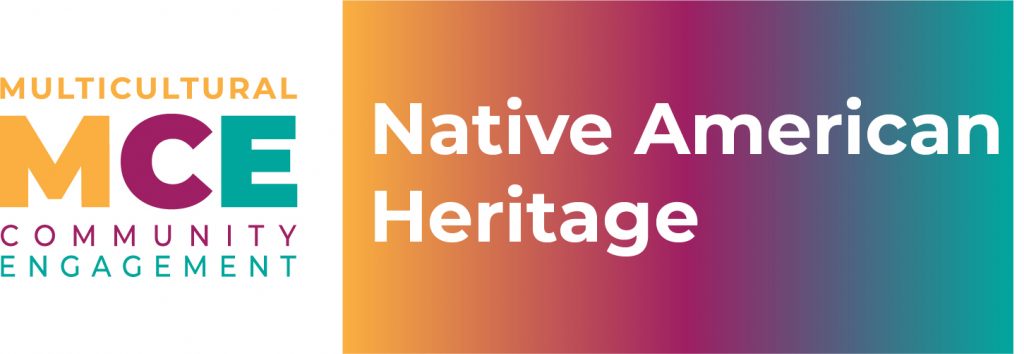

Henrico Celebrates November as Native American Heritage Month
History
Since 1990, Congress has designated November as National American Indian Heritage Month, also known as (Native American Heritage Month), to highlight the contributions and cultures of the indigenous peoples of the North American continent. Such recognition, however, dates back further with state and organizational recognition of indigenous peoples days and commemorations occurring at the turn of the 20th century.
People

Angie Bennett – Henrico County Public Library, Assistant Library Director
Please share something that is meaningful to you about your Native American heritage.
The most meaningful thing about my heritage is we are still here. Early Virginia history depicts my people as traders, and we are a part of the Nottoway Tribe of Virginia. We were hidden in plain sight, almost forgotten. The most meaningful thing besides our history is that I’m finally connecting to part of my lineage.
Understanding the “who I am” has always been a focus. Because my Native American heritage had become more of a family story passed down generationally, I couldn’t fully answer the question of who I was. These stories were filled with uncertainty and questions of connection. To finally put the scattered pieces of my ancestral life and connections together [and] being recognized and authenticated is an indescribable feeling.
Please tell us about your family heritage.
Over the years, I’ve heard countless stories about my heritage and where we come from, none of which was validated by [people] naming a host of [my family’s connection to the Native American] tribes from Virginia to North Carolina. My aunt was dedicated to finding the truth, and her hard work provided a clear picture of our heritage. It’s amazing to put some of the lost history of my family together and connect me back to my people, most of us still living on the same lands. We are a tribe of strong people and leading women, which is my story of overcoming and surviving. I’m overjoyed to connect to my family and recall the stories and understand where our family traditions come from. My family heritage embodies one dedicated to women that lead. Hearing my heritage valued women in leadership was almost comical as I look over the landscape of the lives of my grandmother, aunts and my mother – all natural leaders – and understanding that is who I am at my core. It was a light bulb moment of this is who I am by design.
Please share how you came to the county, your agency/role and what you value about being with the county.
My leadership ability and professional growth brought me to Henrico County, specifically HCPL (Henrico County Public Library). Our libraries and their leadership are stellar. I am excited to be a part of a place that is open to diversity and celebrates leading from the heart. I have a deep love for what I do professionally and serving the public where they are.

Lee Greywolf Lopez – Recreation and Parks, Animal Care Specialist
Please share something that is meaningful to you about your Native American heritage.
Indigenous culture to me is important because we are the original inhabitants of this continent. Our history helped mold this country. We lived in unison with the environment and the animals. We walked in balance. These are things I practice and teach to my children. My culture is important to me because, well, it is me! It’s my ancestors who have gone before me and it’s my distant future relatives whom I will never meet. My ancestors died for me to have a place in this time and that is beautiful. I love my culture.
Please tell us about your family heritage.
I am of the Chiricahua Apache Nation born to the Red Paint Clan as well as part Inca born to the Blood Nation. I am adopted into the On^yote Onyota’a:ka Nation better known as the Oneida: The people of the standing stone of Wisconsin. My family has always played a big role in Traditional Indigenous culture. I am a Men’s Northern Traditional Dancer, artist, and flutist.
My family and I practice traditional medicines, song and music, storytelling, art, dance and participate in indigenous educational programs.
Please share how you came to the county, your agency/role and what you value about being with the county.
I came to be in this position through many years of animal care and veterinary experience. I was so excited to see an Animal Care position open in Henrico. I’ve lived here a good portion of my life, so it’s always felt like home. Once I saw the position posted, I jumped on it. I am an Animal Care Specialist at Meadow Farm and Three Lakes Park where I care for multiple species of animals.
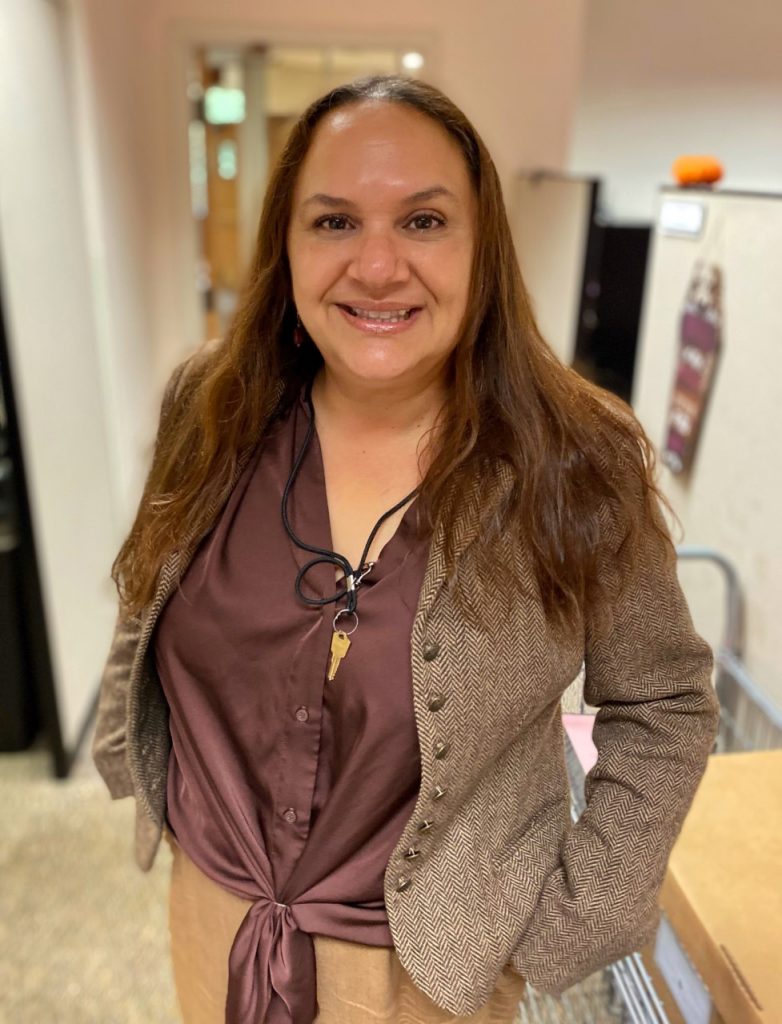
Carmen Rabago – Planning Department, Office Assistant IV
Please share something that is meaningful to you about your Native American heritage.
My ancestors were proud, hard-working and cultivated a great respect for nature. I’d like to think I inherited some of that too!
Please tell us about your family heritage.
Well, I was blessed! My father was Chiricahua Apache, and his people were from Arizona. His father rode with Pancho Villa during the Mexican Revolution! My mother’s family were descendants of some of the first Virginia settlers, most of whom were Quakers. Pride, resilience and fortitude are three words that come to mind.
Please share how you came to the county, your agency/role and what you value about being with the county.
I worked in the airline industry over 22 years and left the Northern, Virginia area in 2009. I landed in Chesterfield County in 2011 as an AmeriCorps member with Virginia State Parks. I spent three beautiful years at the Maymont Foundation and started with the [Henrico County] Planning Department in December of 2021. I’ve always had an interest in what’s going on around me and the use and development of land so what better way to explore that interest.
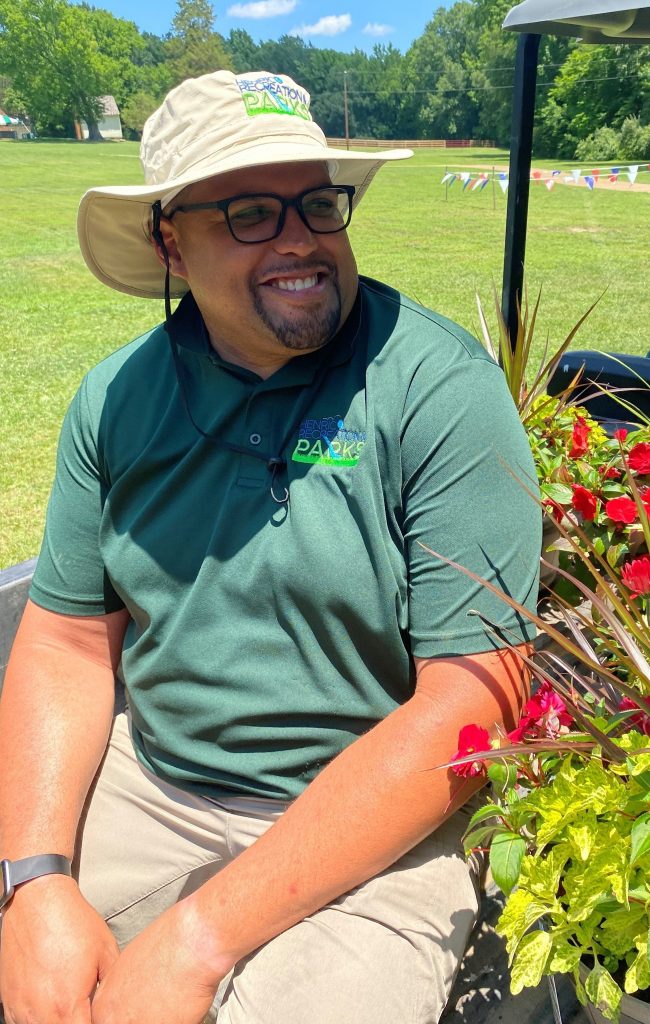
Julian Charity – Recreation and Parks, Division Director of History, Heritage & Natural Resources
Please share something that is meaningful to you about your Native American heritage.
My family has always told very interesting stories about our Native American ancestry and it wasn’t until I was much older that I think I truly gained an appreciation for them. My grandmother would talk about Grandma (my 2x Great Grandmother Charlesanna) being born and raised on the Pamunkey reservation and meeting Grandpa (my 2x Great Grandpa Burl) then getting kicked out of the tribe because she “married a black man.” They lived during a very difficult time in Virginia’s history when Virginia refused to acknowledge the existence of Native Americans unless they were lineal descendants of Pocahontas. In the name of “racial purity,” entire groups of people were ignored, and on paper, erased. In more than one instance, families were divided because of racial identities. Children of the same parents identifying as different races in order to just live their lives free of persecution. If you were not white, you were black, and nothing else existed. My grandmother (Gloria) grew up somewhat angry about the way her father and grandmother had been treated, so she did not recognize her Indigenous heritage and my family wasn’t really taught many of the traditions. It is just recently we are able to begin fully embracing our heritage. So for me, to recognize the persistence of Virginia’s Indigenous Peoples, is not only one of true honor, it is righting the wrongs of the past to create a better future for those who follow. That’s the life I want for my children, and the mantle I carry for those who came before me.
Please tell us about your family heritage.
My family is older than this nation. I take great pride in telling people my family was in Virginia before there was such a thing. On my mother’s side my ancestry is Chickahominy, and on my father’s, Chickahominy and Pamunkey. Both federally recognized tribes who continue to walk the lands of Virginia and beyond as they have for generations.
Please share how you came to the county, your agency/role and what you value about being with the county.
I came to the county after working over a decade with the Shirley Plantation Foundation as the Visitor Services Manager and Historian. I began in July 2019 as a Facility Coordinator at the Meadow Farm Museum and the Virginia Randolph Museum in the Division of Recreation & Parks. It was an amazing opportunity which presented itself to further my career in the public history field and continue to share my passion for history with others. History has always been my passion and being assigned to Recreation has afforded me the privilege of meeting people and sharing historical opportunities in a different way. I am now the Division Director of History, Heritage & Natural Resources— charged with not only sharing the history of Henrico County, but all of the Natural Resources Henrico has to offer. So the mantle I carry is not only mine, but for those who came before, and those who come after.
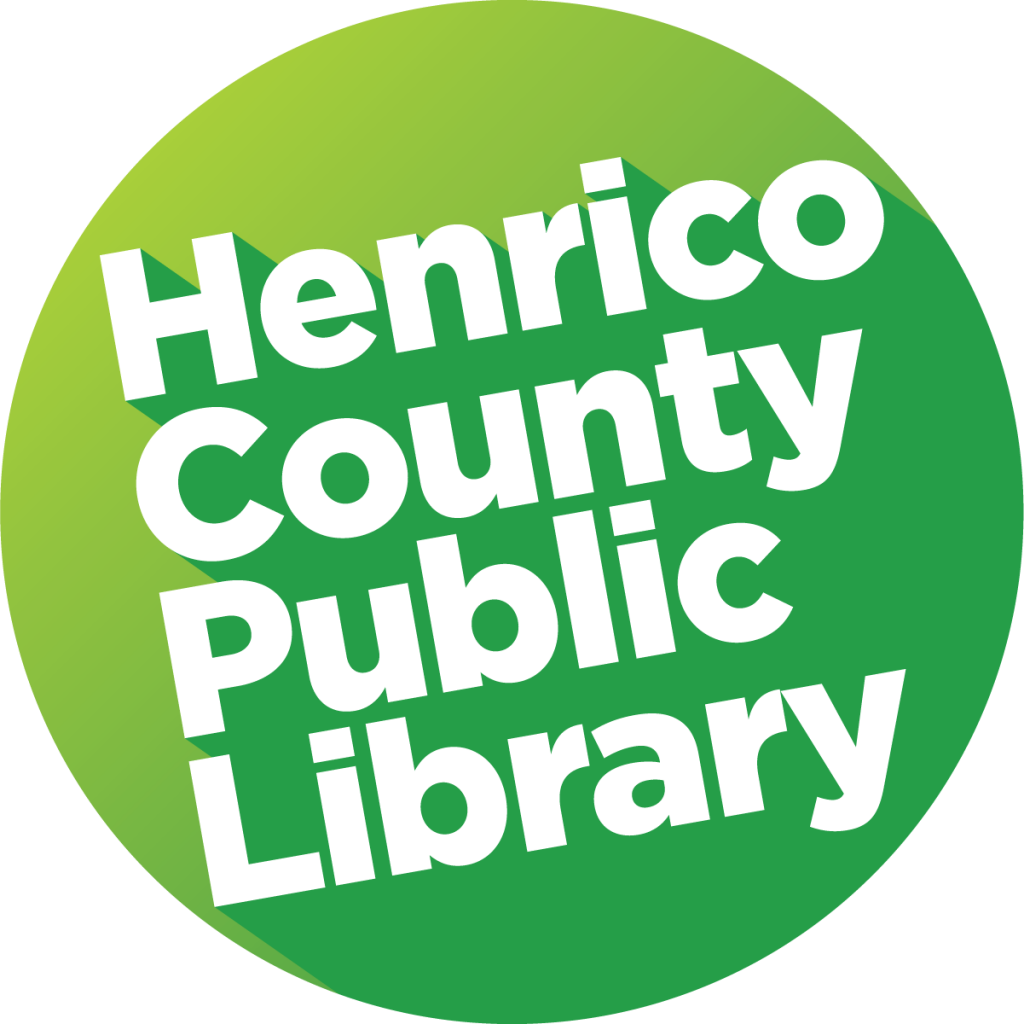
Featured Biographies
Opossunoquonuske
- Born: unknown
- Died: 1610
- Gender: Female
- Ethnicity: Indigenous/Native American
- Place of Birth: Virginia
- Field: Politics
Summary
Opossunoquonuske, called “Queen of the Appamattocks” by the first English settlers, was the sister of Coquonasum, a weroance (chief) of the Appamattuck Indians, one of several tribes in the Powhatan Confederacy. She was the weroansqua (chief) of one of the tribal towns near the mouth of the Appomattox River in the eastern part of what became Henrico County. This town was populous enough that she was able to send twenty able, trained warriors into the field when called upon to do so. She was thus a powerful and important contact for the English to make as they explored farther up the James River.
Opossunoquonuske, described as “young and comely” by Captain John Smith, was one of the first Virginia Indian leaders met by the English in 1607.
On May 26, 1607, Captain Christopher Newport met her at a place the Englishmen called “Queene Apumatec’s bower.” She made a majestic and dignified entrance, accompanied by her attendants, and was dressed more elegantly than anyone else present, wearing a copper crown and copper jewelry in her ears and around her neck, and she wore her long black hair hanging down her back. She did not flinch, as other Indian leaders did, when at her request one of Newport’s men fired his gun.
Even after this meeting with Newport, the Appamattuck tribe in general continued to be very wary of the English colonists in their area. Opossunoquonuske invited several of the Englishmen to visit her town in the summer of 1610, unarmed, and then her men killed them all but one, who managed to escape. In retaliation, the English under Sir Thomas Dale burned the town, killed several of the natives, and mortally wounded Opossunoquonuske. She reportedly died during that winter, and the next year, Dale renamed that whole area Bermuda Hundred.
Source
Library of Virginia. “Virginia Women in History 2007.” www.lva.virginia.gov/public/vawomen/2007 (accessed April 17, 2010); Price, David A. Love and Hate in Jamestown. New York: Knopf, 2003; Noel Hume, Ivor. The Virginia Adventure. New York: Knopf, 1994.
Resources and Local Connections
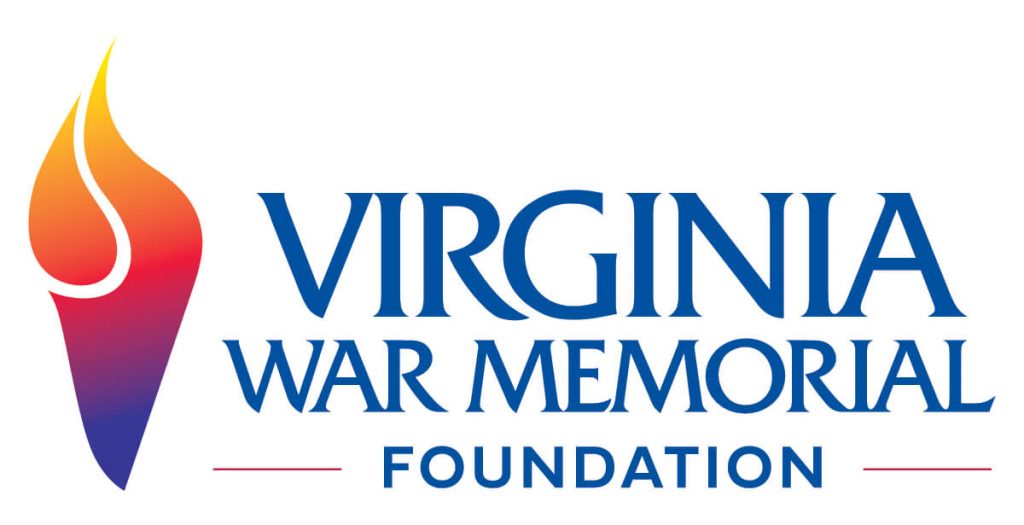
The National Native American Veterans Memorial
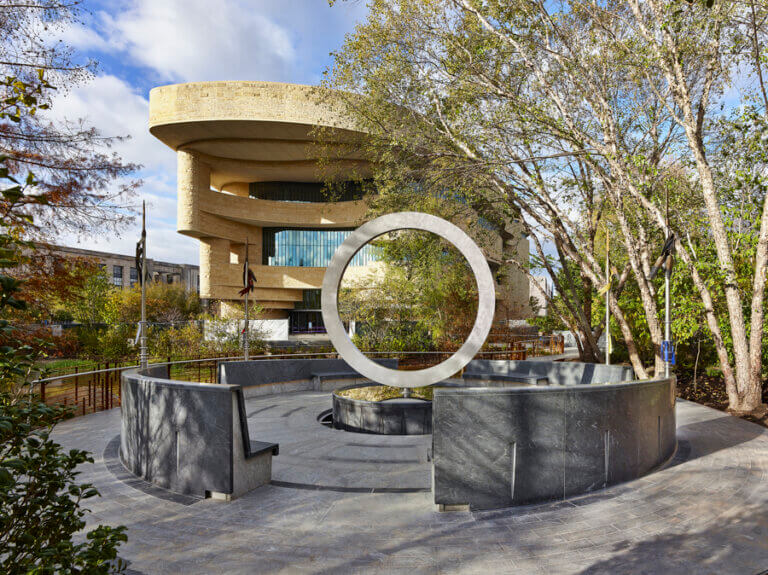
On Veterans Day 2020 the National Museum of the American Indian unveiled on its grounds “The Warriors’ Circle of Honor,” a memorial to honor the largely unknown and unrecognized service and sacrifice of Native Americans in the United States military.
Despite a legacy of broken treaties, cultural suppression, and racial discrimination, Indians have served this country in every conflict and more Indians continue to serve in the U.S. military than any other ethnic group.
Engagement


November is Native American Heritage Month, and the Library has a full line-up of performances, speakers, film screenings, and book discussions about Indigenous history and culture. Read on to learn more about upcoming programs and recommended titles from our collection!
FROM THE COLLECTION Easy, Kids, Teens and Adult a curated Native American Heritage book list for all from HCPL. For more information on these events and selections, visit HenricoLibrary.org.
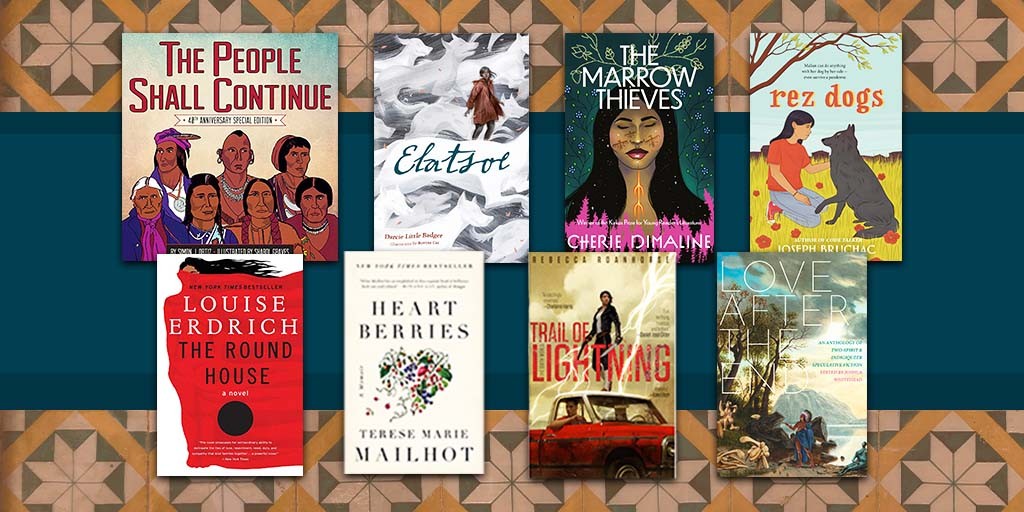

Enjoy the compiled selection of books by Indigenous authors and illustrators to help you learn and celebrate.
Recommended Titles
For Kids
The People Shall Continue by Simon Ortiz, with illustrations by Sharol Graves
This picture book is a great introduction to Native peoples’ histories and traditions of resilience. Walking readers through the tales of multiple nations from Creation to today, Ortiz simply but effectively communicates stories of struggle and survival.
Rez Dogs tells the story of a young Wabanaki girl and her dog quarantining on the reservation with her grandparents during the Covid-19 pandemic. Writing in verse for middle grade readers, Bruchac elegantly blends the grandparents’ stories of struggles past, contemporary troubles, and the acts of community care she has experienced with her family and tribe.
Also available on Libby in eBook and eAudiobook formats.
For Teens
The Marrow Thieves by Cherie Dimaline
Set 50 years in the future, this dystopian science fiction novel follows the story of a group of First Nations teens as they evade capture from the Recruiters, who are trying to extract their bone marrow as a means of restoring white people’s ability to dream.
Also available on Libby in eBook and eAudiobook formats.
Elatsoe by Darcie Little Badger, with illustrations by Cai Rovina
In this beautiful tapestry of paranormal urban legends and Lipan Apache folktales, Elatsoe, a young, asexual Indigenous woman with supernatural powers, investigates her cousin’s murder. Rovina’s greyscale illustrations and Little Badger’s prose create a story charming and haunting in equal measure.
Also available on Libby in eBook and eAudiobook formats and on Hoopla in eBook format.
Recommended Titles (Continued)
For Adults
Love After the End by Joshua Whitehead
This anthology of Two-Spirit and queer Indigenous speculative fiction offers creative visions of the future, replete with AI rats and intergalactic forests, imagining a better future while acknowledging the wrongs of the present and the past.
Also available on Hoopla in eBook format.
The Round House by Louise Erdrich
Joe Coutts, an Ojibwe teenager, reckons with the reality and trauma of being part of a marginalized population in the U.S. after his mother is assaulted in a hate crime, probing the meaning of community and the nature of justice.
Also available on Libby in eBook and eAudiobook formats and on Hoopla in eBook format.
Trail of Lightning by Rebecca Roanhorse
In a post-apocalyptic world, a supernatural monster hunter named Maggie must fight monsters and the witches who create them in order to protect her tribe. Delving deep into Diné legends and culture, Roanhorse creates a fast-paced, action-filled magical adventure.
Also available on Libby in eBook format.
Heart Berries by Terese Mailhot
Handed a notebook at a crucial turning point in her life, Mailhot begins to make sense of her difficult childhood on the Seabird Island Indian Reservation, her mental health, and what it means to love and mother in her own way.
Also available on Libby in eBook format and on Hoopla in eAudiobook format.
There are many more Indigenous authors in our collection, and we would love to help you find more! Check out our latest Overdrive List for a selection of teen titles featuring indigenous authors and characters or visit our My Next Read page for customized book recommendations.
Heritage
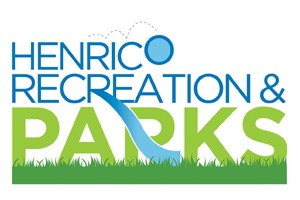
Meadow Farm at Crump Park
Archaeological digs revealed Native American impact on the property along rivers, creeks, and streams. The Native Americans used the areas along the waterways as campsites during seasonal migrations between hunting grounds. European impact began in 1713 when Richard Baker and William Sheppard were granted 400 acres of Henrico property through the headright system

Baker and Sheppard paid passage for eight indentured servants to Virginia, and in return, were granted rights to 50 acres of land per person. William Sheppard would eventually buy his partners shares, thus taking sole ownership of Meadow Farm.
In 1800, two men enslaved by the Sheppard family, Tom and Pharaoh, informed Mosby Sheppard of a planned slave insurrection in Henrico. The plan was organized by Gabriel Bingham, a blacksmith enslaved by Thomas Henry Prosser of nearby Brookfield Plantation. Gabriel’s plan was to organize enslaved and free blacks, poor working whites, and local Native Americans to kidnap Governor James Monroe, overthrow the government in Richmond and demand freedom for all people. Mosby Sheppard was able to get word to Governor Monroe, who would use the local militia to put down the plot. The unsuccessful slave uprising became known as Gabriel’s Rebellion. Read more.
November 2022 Native American Heritage Month (article)
During National Native American Heritage Month, we will explore the heritage, culture, and experience of Indigenous peoples both historically and in American life today, while also sharing the various ways the National Park Service collaborates with Indigenous communities.
America is a vast land of many cultures dating back thousands of years to the original inhabitants of the land. Today, programs, partnerships, and parks preserve and share the stories and heritage of Indigenous people. National Native American Heritage Month is celebrated each year in November. It is a time to celebrate the traditions, languages, and stories of Native American, Alaska Native, Native Hawaiian, and Island communities and ensure their rich histories and contributions continue to thrive with each passing generation. It is also a time to evaluate our pledge to maintain the meaningful partnerships we have with Tribal Nations and renew our commitment to our nation-to-nation relationships as we seek to ensure every community has a future they deserve.
- Share the connections your site has to American Indian, Alaska Native, and Native Hawaiian heritage, history, and their way of life.
- Explore the culture and experiences of AI/AN/NH in your community today.
- Invite American Indians, Alaska Natives, Native Hawaiians, or a local indigenous group to present about their culture, ancestral homeland, and contemporary way of life.
- There are 573 federally recognized Indian Nations plus other tribes located throughout the United States who are recognized by their respective state governments.
- Consider connecting this theme with other events in November, including Veterans Day.
- Use objects or artifacts in your museum collection or achievements by indigenous individuals to share history and heritage of native people past and present.
- Encourage local teacher to use the Honoring Tribal Legacies teachings in their classrooms.
Words Matter
It’s important to use language correctly in our messaging. Native nations were separated from their home lands due to battles, genocide, and western expansion. There are distinctions among various tribes resulting from geographic location, language, and cultural practices. For example, within the Lakota Nation (aka Sioux), there are seven bands and within one band there are three: Hidasta, Arikara, and Mandan. Within the Cheyenne, there are two: Northern and Southern. It’s similar for the Arapaho, River Crow, Mountain Crow, and others. In addition, there are various regional identities, such as the Northern Plains, Southern Plains, Wetlands, etc. The Harpers Ferry Center Editorial Style Guide provides guidance for NPS staff and partners. We are also grateful for assistance from CIRCLE, the Council for Indigenous Relevancy, Communication, Leadership, and Excellence employee resource group, in developing this guidance. Here are some specific items that might be helpful:
Create, develop, and share educational activities and youth programs related to AI/AN/NH both past and present. AI/AN/NH are contemporary and ‘living’ cultures and that should be conveyed to the staff and to the public.
Alaska Native This term refers to the indigneous people of the area. Native Alaskan is anyone from Alaska (including non-indigenous).
American Indian Some tribes (and their associated parks) prefer Native American. Use specific tribal name(s) whenever possible, accurate, and appropriate. See also First Nations, tribal names.
First Nation, First Nations Refers to aboriginal people in Canada who are neither Inuit (people of the Canadian Arctic) nor Métis (descendants of First Nation people who married Europeans). Often used in the plural in the collective sense, as in a program for First Nations youth. The term is widely used in Canada but is not used in the US, except in connection with Métis whose homelands include northwest Minnesota, North Dakota, or other northern states. See also American Indian.
Native American Use if requested by specific tribes or parks. See American Indian.
Tribal Name Use specific tribal name(s) whenever possible, accurate, and appropriate. Also the preference is to use the singular noun: Navajo, Lakota, Tlingit. See also American Indian. Examples: The Navajo entered Canyon de Chelly about 300 years ago. The Anishinaabek fished in Lake Superior.
National Park Service. November 2022 Native American Heritage Month. nps.gov/lecl/getinvolved/november-2022-native-american-heritage-month.htm


